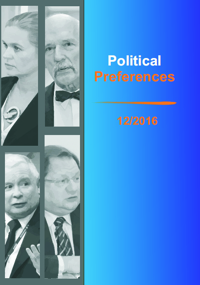

The Internet as an interactive tool that positions political offers
Technological progress has revolutionized the contemporary market and communication in every area and dimension. As a result of the emergence of many new opportunities, targeted messages and increase the volume of marketing messages that reach a wide audience, consumers are becoming more demanding. Gaining their trust is much harder today than ever before. The development of the media caused the appearance of adverse syndromes in the functioning of modern democracy. The focus on capturing the viewer at all costs by the mass media makes public political discourse “howled down” by presented in the media discourse elites. In this situation, the entity due to the fear of being ostracized by society, takes only the topics of the mass media and expresses opinions similar to the opinions expressed by these media. This leads to darkening political discourse. The model that favours the civic discussion of political action is based on the contacts “face to face” thus, model “one to one”. New opportunities for interactivity, above all, increasing availability and ease of use of ICT (information and communication technologies), forces the actors to the political scene to change their approach to the voters. This new approach creates a model of communication very close to meeting “face to face”, but in a virtual environment (Kowalik). The tools of new media not only facilitate positioning of political offers, but also by its interactivity, implement this model in the area of virtual space. This is especially important in the space in which successive generations of voters are present today. According to Adamski (2010: 252), the Internet can not rather be considered only as means of mass media. Instead, it is a kind of communication environment in which both the communication to an individual and the means of mass communication can operate. Batorski, defines the internet as metamedium because it contains, at least it allows to create virtually any media properties. The aim of the article is to point out the importance of the Internet in political marketing by the perception of marketing products and services. This perception comes from the broader analysis, conducted by the author, and contains the issue of penetration methods, techniques and instruments of marketing for the economic social area. Article responds to the hypothesis that politicians do not exploit fully the possibility of building an interactive relationship with the voter via the Internet that can contribute to the success of the election.
Key words:
Internet, political offer, segmentation, offer positioning, social media
Download files
Citation rules

No. 12 (2016)
Published: 2016-12-01
 10.31261/polpre
10.31261/polpre